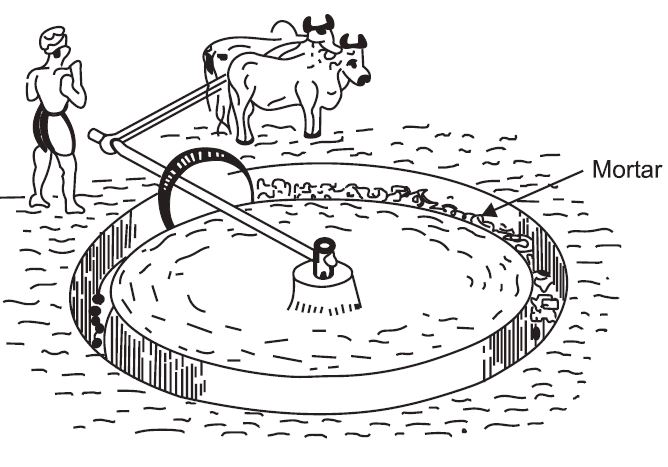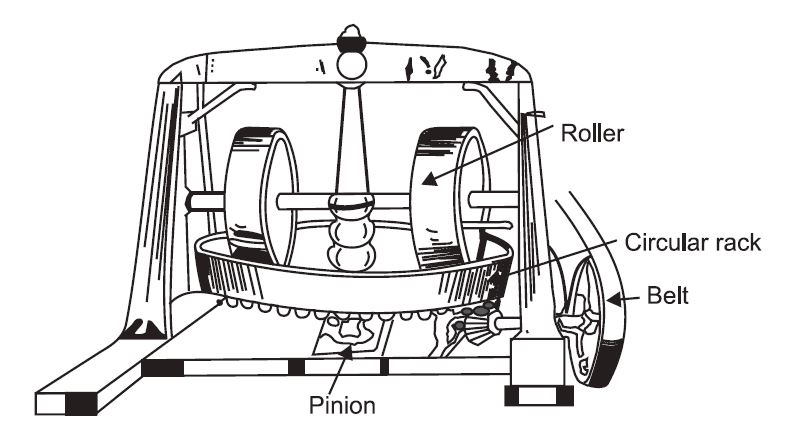Introduction
Mortar is a mixture of materials used in construction to bind together other building materials such as bricks, stones, and concrete blocks. It is typically made from a mixture of Portland cement, sand, water, and sometimes lime or other additives. The main function of mortar is to hold the building materials together, creating a strong and durable structure. Mortar is typically applied in between individual building units, filling the gaps and creating a solid bond. It also helps to distribute the load evenly across the building, ensuring that the weight of the structure is properly supported. This write-up specifically addresses lime mortar.
What is Lime Mortar?
Lime mortar is a type of building mortar used in construction for thousands of years and was the most common type of mortar used in buildings until the 19th century before the widespread use of Portland cement. It was used in many different types of buildings, including ancient Roman buildings, medieval castles and cathedrals, and traditional buildings in many parts of the world.
Lime mortar is made by mixing lime, sand and water. There are several types of lime mortar, including hydraulic lime mortar and non-hydraulic lime mortar. Hydraulic lime mortar sets and hardens through a chemical reaction with water, while non-hydraulic lime mortar sets through a process of carbonation.
In a lime mortar, lime can be either fat lime (also known as quick or hydrated lime) or hydraulic lime. Fat lime has a high concentration of calcium oxide and sets through the process of losing water and absorbing carbon dioxide from the air, which may lead to recrystallization over time. On the other hand, hydraulic lime contains small amounts of silica, alumina, and iron oxide. When combined with water, it forms a putty or mortar that can set and harden even when submerged in water.
Lime mortar also includes mortars of lime and sand with the addition of pozzolana. Lime mortar mix shall be designated by the relative proportions of lime putty and sand (dry) or lime putty, sand (dry) and pozzolanic material where the use of pozzolanic material is indicated. In case the sand used is moist, the necessary allowance shall be made for bulking.
Slaked fat lime is used to prepare mortar for plastering, while hydraulic lime is used for masonry construction and is most suitable for the construction of chimneys and lightly loaded superstructure of buildings. The mix proportions of lime mortar for various types of works are given in the Table below.
| Type of Lime | Lime | Sand | Fineness Modulus of Sand | Type of Work |
|---|---|---|---|---|
| Fat Lime | 1-2 | 2-3 | 2-3 | Plastering |
| 1.5 | 2-3 | 2-3 | Pointing | |
| Hydraulic Lime | 2-3 | 1.5-2.5 | 1.5-2.5 | Masonry |
Also, read: What is Mortar? | Types of Mortars | Application
Preparing Lime Mortar
There are several ways to prepare lime mortar.
Manual Preparing or Mixing
To prepare lime mortar manually, the necessary amount of lime and sand are typically poured onto a surface that doesn’t allow water to pass through it, such as an impervious floor, or into a tank. The lime and sand are then mixed thoroughly in a dry state by turning them over and over with spades. Once the dry mixing is complete, water is gradually added to the mix, and the mixing process is repeated with the spades until a mortar of even colour and consistency is achieved.
This process is essential for ensuring that the lime and sand are evenly distributed and thoroughly mixed, which will contribute to the overall quality and strength of the final product. It’s crucial to achieve a uniform colour and consistency throughout the mortar, as this will ensure that it sets and hardens correctly and provides a secure bond between the building materials. The use of an impervious surface or tank helps to contain the mix and prevent any loss of material or contamination from outside sources.

Also, read: Types of Bricks Used in Building Construction | 6 Types of Bricks
Mill Mixing
In less developed countries, mills that are typically used for preparing lime mortars include the Chakki (wheel) or Ghanni, which are operated by bullocks, as shown in Figure 2. On the other hand, developed countries tend to use pan mills, as depicted in Figure 3.
When using a Ghanni mill, the necessary quantity of ingredients in the form of putty is placed into a trench, and then grinding is carried out by moving a stone roller for 100 to 200 revolutions. This process can take up to 2 to 3 hours for each batch of the mix. In contrast, the pan mill is much more efficient and requires less time to complete the mixing process.
Regardless of the type of mill used, the preparation of lime mortar is a crucial process that requires attention to detail and precision to ensure that the final product is of high quality. Proper mixing and grinding of the ingredients are essential to achieve the desired consistency and strength of the mortar, which is critical for creating a sturdy and long-lasting structure.


Figure 3: Pan mill
Precaution for Preparing Lime
Lime mortar or putty should be kept moist till use and in no case, its drying is allowed. The mortar made of hydraulic lime should be consumed within one day and that with fat lime within 2-3 days.
To keep the lime mortar or putty moist, it should be stored in a damp environment, such as in a covered container or wrapped in a damp cloth. It is crucial to prevent the mortar from drying out, as this can affect its bonding properties and reduce its strength.
In the case of hydraulic lime mortar, it should be used within one day of its preparation. This is because hydraulic lime contains reactive components that can start to set and harden quickly once water is added to the mix. Therefore, it is essential to use the hydraulic lime mortar as soon as possible after preparation to ensure that it sets and hardens correctly and provides a strong bond between the building materials.
Fat lime mortar, on the other hand, can be used for a slightly longer period of time. It should be consumed within 2-3 days of its preparation to maintain its quality and effectiveness. However, it is still important to keep the fat lime mortar moist and prevent it from drying out during this time.
Also, read: Types of Stone Masonry Works | Rubble Masonry
FAQs
Q: What is lime mortar?
A: Lime mortar is a type of mortar made from a mixture of lime, sand, and water. It has been used in construction for centuries and is known for its durability, breathability, and ability to self-heal.
Q: What are the benefits of using lime mortar?
A: Lime mortar has several benefits, including:
– It is more breathable than cement-based mortar, allowing moisture to escape and preventing damage to masonry caused by trapped moisture.
– It has a lower carbon footprint than cement-based mortar because it requires less energy to produce.
– It can self-heal, which means that small cracks and gaps can fill in over time, maintaining the integrity of the masonry.
– It is flexible and can accommodate movement in the building without cracking.
References:
- Punima, Dr. B. C., Jain, Er. A. K., & Jain, Dr. A. K. (2023). Building Construction (12th ed.). Luxmi Publication (P) Limited. https://www.laxmipublications.com/servlet/lpgetbiblio?bno=000200&pageName=Keywords
- Bhavikatti S.S., Basic Civil Engineering, New Age International (P) Limited
- Dwivedi Praveen Bajpai Prachi (2018), Hand Book of Civil Engineering, CL Media (P) Ltd.
- Lime mortar. (2023, January 5). In Wikipedia. https://en.wikipedia.org/wiki/Lime_mortar
- Duggal, S. K. (2020). Building Material (3rd rev. ed.). New Age International (P) Limited, Publishers.
- Lime mortar(2022, May 09) In Conservation Wiki. https://www.designingbuildings.co.uk/wiki/Lime_mortar
![]()







